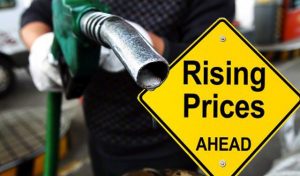Commodity prices continued their recovery in the first quarter of 2021 and are expected to remain close to current levels throughout the year, lifted by the global economic rebound and improved growth prospects, according to the World Bank’s semi-annual Commodity Markets Outlook.
However, the outlook is heavily dependent on progress in containing the COVID-19 pandemic as well as policy support measures in advanced economies and production decisions in major commodity producers.
Energy prices are expected to average more than one-third higher this year than in 2020, with oil averaging $56 a barrel. Metal prices are expected to climb 30 percent; and agricultural prices are forecast to rise almost 14 percent. Almost all commodity prices are now above pre-pandemic levels, driven by the upsurge in economic activity, as well as some specific supply factors, particularly for oil, copper, and some food commodities.
“Global growth has been stronger than expected so far and vaccination campaigns are underway, and these trends have buoyed commodity prices. However, the durability of the recovery is highly uncertain,” said Ayhan Kose, World Bank Group Acting Vice President for Equitable Growth, Finance & Institutions and Director of the Prospects Group. “Emerging market and developing economies, both commodity exporters and importers, should strengthen their short-term resilience and prepare for the possibility of growth losing momentum.”
Crude oil prices rebounded from record lows reached during the pandemic, supported by a rapid global economic recovery and continued production cuts by the Organization of the Petroleum Exporting Countries (OPEC) and its partners. Demand is expected to firm over 2021 as vaccines become widely available, especially in advanced economies, pandemic restrictions are eased, and the global recovery is sustained. Prices are expected to average $60 a barrel in 2022. However, if pandemic containment falters, a further deterioration in demand could put pressure on prices.
Metal prices are expected to give back some of this year’s gains as stimulus-driven growth fades in 2022. A faster-than expected withdrawal of stimulus by some major emerging market economies could pose a downside risk to prices; however, a major infrastructure program in the United States could support prices for metals, including aluminum, copper, and iron ore. An intensification of the global energy transition to decarbonization could further strengthen demand for metals.
Agricultural prices have risen substantially this year, particularly for food commodities, driven by supply shortfalls in South America and strong demand from China. However, most global food commodity markets remain adequately supplied by historical standards, and prices are expected to stabilize in 2022.
While global food commodity prices have remained stable recently, emerging evidence continues to confirm the effects of COVID-19 on food insecurity that are expected to continue through 2021 and 2022. An increasing number of countries are facing growing levels of acute food insecurity, reversing years of development gains.
“Although food commodity markets are well supplied globally, COVID-19 has severely impacted local labor and food markets around the world, reducing incomes, disrupting supply chains and intensifying food and nutrition security issues that were present even before the pandemic struck,” Kose said. “It is high time for policymakers to address the underlying sources of food insecurity.”
A Special Focus section investigates the impact of sharp changes in metal prices on metal-exporting countries. Metals, especially copper and aluminum are a major source of export revenue for 35 percent of emerging market and developing economies, with important implications for economic growth, macroeconomic stability, and, hence, poverty reduction. As metal prices are primarily driven by global demand, these countries can be particularly hard-hit by global recessions, which can trigger both a drop in metal prices and export revenue. Windfall revenues from high metal prices, which tend to be short-lived, should therefore be set aside in anticipation of the longer-lasting negative effects of price collapses that would warrant policy support.
“Metal price shocks are primarily driven by external demand factors, such as global recessions and recoveries,” said World Bank Senior Economist John Baffes. “During a recession, metal exporters may be hurt by both the broader downturn as well as a collapse in prices. Output losses associated with price drops are greater than the gains from price increases, and policymakers should prepare accordingly.”







